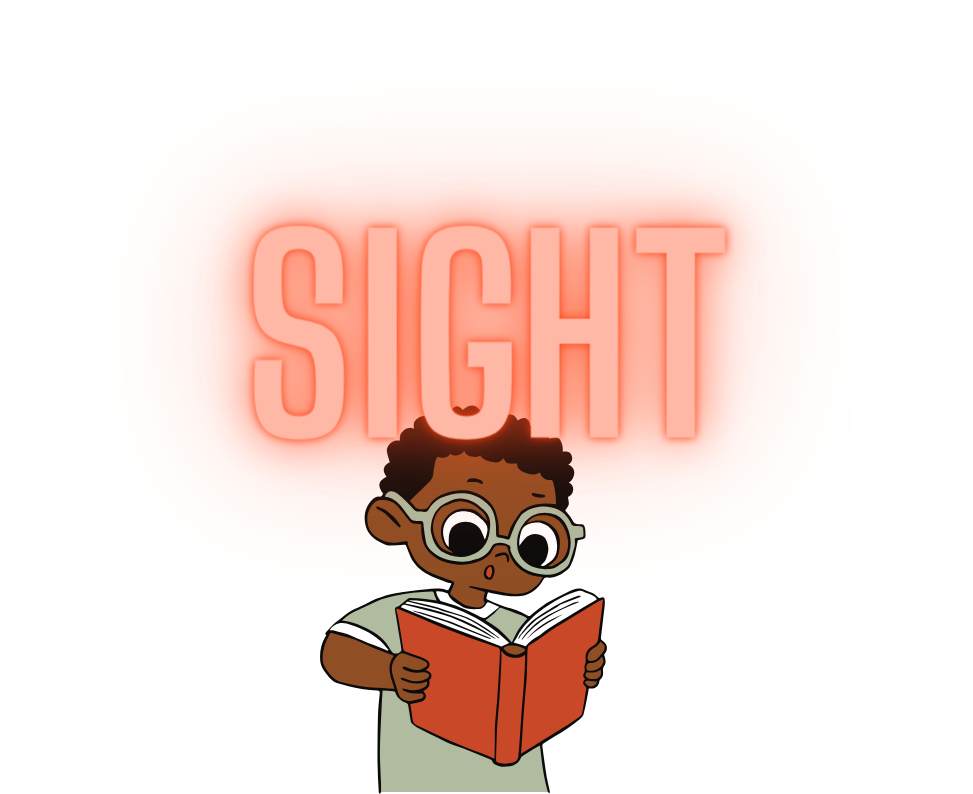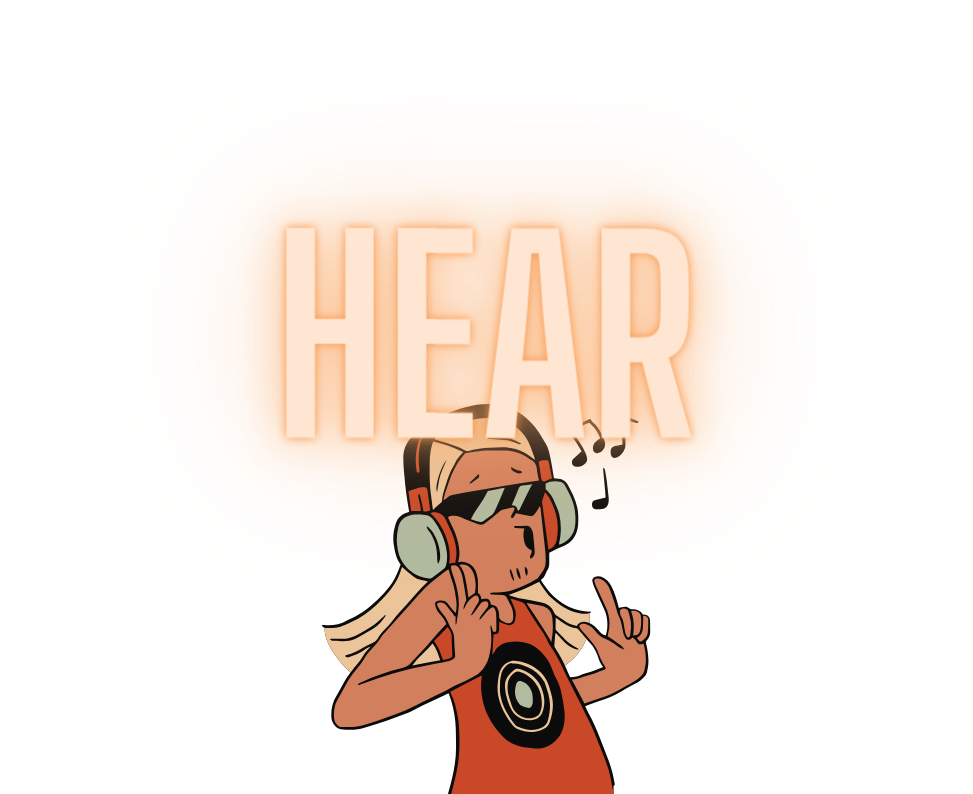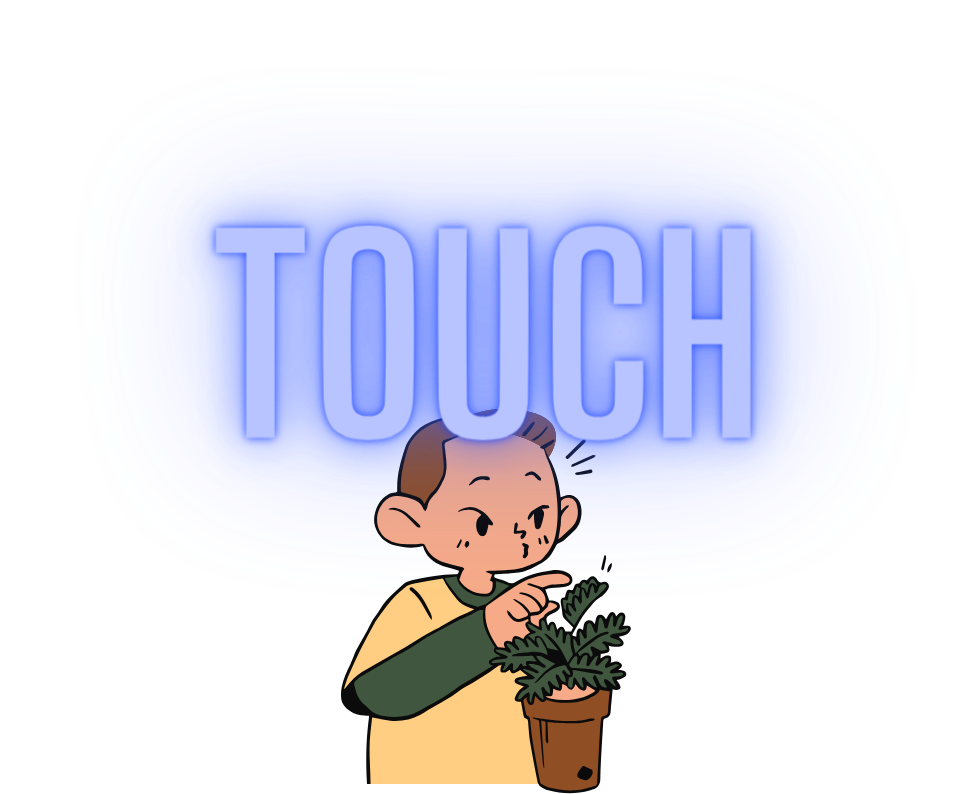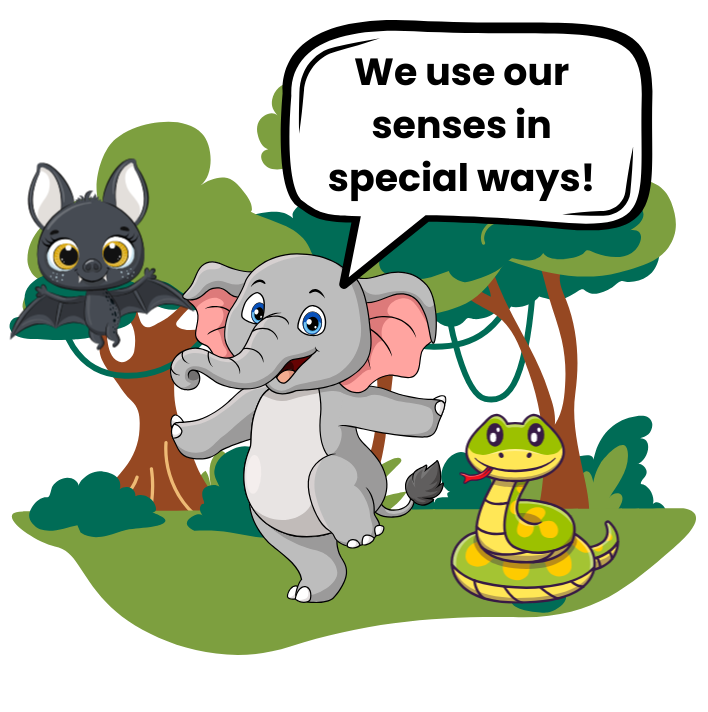Lesson 3: Sensory Verbs

Welcome, young explorers! Our five senses - sight, hearing, smell, taste, and touch - help us understand and interact with the world around us. But did you know that we can also use our senses as verbs? Let's dive into how we can do just that!
The Five Senses

Sight (to see)
When you use your eyes, you’re seeing. But “to see” isn't just about looking - it’s about understanding what’s in front of you. As a verb, it can mean noticing or watching.
Example: Ben sees a beautiful butterfly fluttering by the window.

Smell (to smell)
Want to smell something? You're using your nose! To smell doesn't just mean to sniff; it can also mean to sense a specific scent or odour.
Example: Alex smells the delicious cookies baking in the oven.

Taste (to taste)
Tasting is not just when food touches your tongue; it’s also about savouring the flavours. When you taste, you experience how something is sweet, sour, bitter, or salty.
Example: Ella tastes the tangy lemonade and smiles at its refreshing flavour.

Hearing (to hear)
Listening is what we do with our ears. When we hear something, it means that the sounds reach our ears. It can also suggest paying attention to someone or something.
Example: Natasha hears the sound of raindrops tapping against the rooftop.

Touch (to touch)
We touch things to feel them with our fingers or our skin. As a verb, touch means to come into contact with something and sense its texture or temperature.
Example: Josh touches the soft fur of his pet rabbit, feeling how fluffy it is.
Fun Facts
- Did you know bats see with their ears? Yes, they use echolocation to navigate!
- Snakes use their tongue to taste the air!
- Elephants can hear through their feet! They pick up vibrations from the ground.

Everyday Uses
We often use these verbs in everyday language without even realizing it:
- “I can’t believe what I’m seeing!” - Expressing surprise or disbelief at what's seen.
- “Did you hear the latest news?” - Discussing new information.
- “This soup smells heavenly!” - Complimenting the aroma of food.
- “Take a taste of this cake. It’s chocolatey and rich!” - Offering food to try.
- “Please don’t touch the wet paint.” - Warning about a surface to avoid contact with.
Fantastic work with the notes, explorers of expression! It’s time to level up your skills in the digital realm. Click ‘Next’ to advance to our interactive worksheet, where you’ll harness the power of sensory verbs to craft vibrant scenes that leap off the screen.
